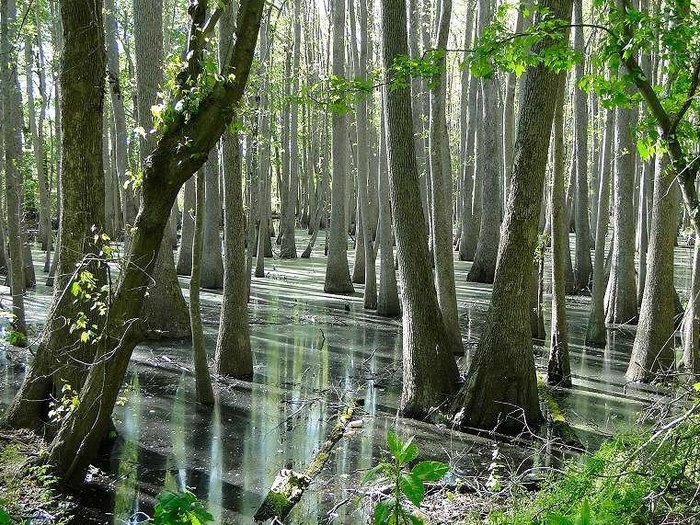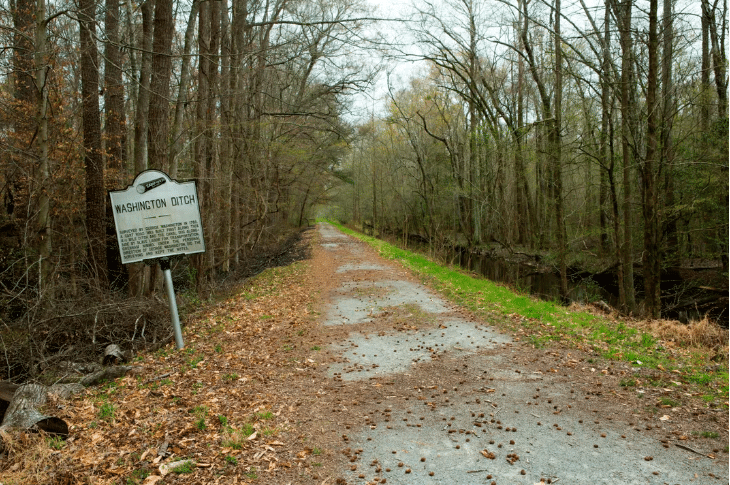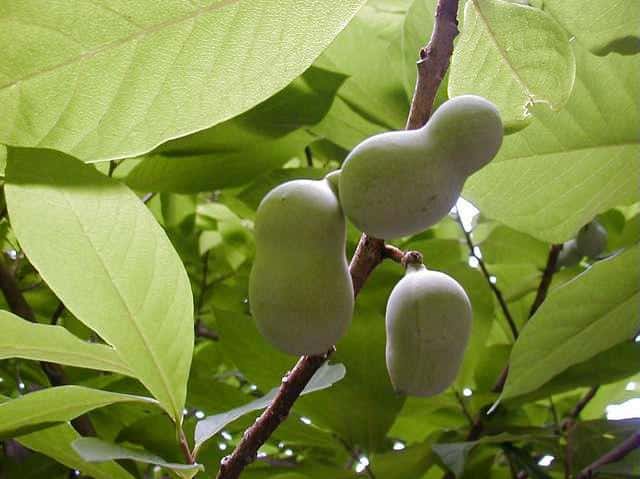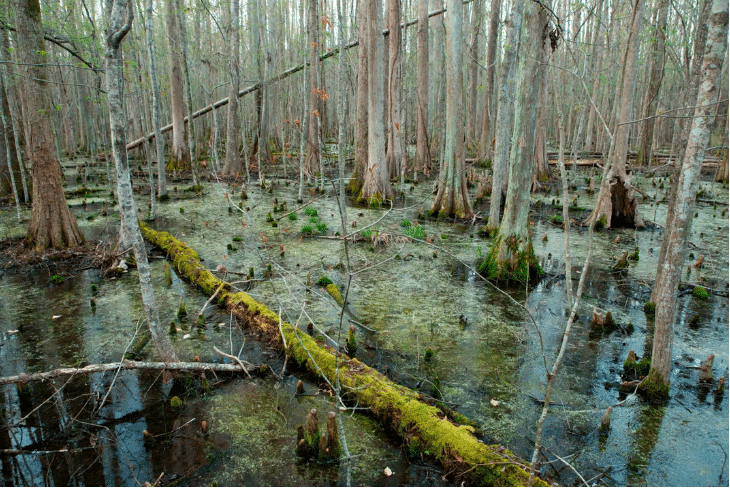
Photo courtesy of Only in Your State
Today, the Great Dismal Swamp, located across southeastern Virginia and northeastern North Carolina, is a national wildlife refuge encompassing about 112,000 acres. Having once covered over a million acres of the coastal plain, this sprawling system of wetlands is home to black bears, red-cockaded woodpeckers, southern plains bumblebees, Dismal Swamp short-tailed shrews, cricket frogs, pawpaw trees, and many other species of wildlife. A biodiversity hotspot with botanical species from both northern and southern climates, biologists with the U.S. Department of Fish and Wildlife and the National Wildlife Refuge system are hard at work making sure it remains a viable habitat. This involves working with the U.S Army Corps of Engineers to manage the swamp’s hydrology. The natural flow of ground and surface waters within the wetlands was heavily disrupted by the construction of drainage ditches, one of which was commissioned by George Washington, who recognized the economic potential of harvesting timber from within the swamp. That little nugget of knowledge provides us with our first clue that there is more than a rich natural history in the Great Dismal Swamp: there is a rich cultural history as well.

Photo courtesy of Allison Shelley and Smithsonian Magazine
Almost impossible to navigate by canoe or by horseback, the dense quagmire was home to indigenous groups as far back as 6,000 years ago. When European colonists arrived, the surrounding region was turned into farmland and worked by enslaved Africans, enslaved indigenous people, and indentured servants. Those wanting to escape slavery would often head for the swamp, where they were willing to risk running into venomous snakes, mosquito hordes, and the boot-sucking peat muck to secure their freedom. Thus, the Great Dismal Swamp became a stop along the Underground Railroad, where runaway slaves could hide and receive aid from allies on their way to northern states and Canada. The swamp became notorious as a hideout for runaways, and the North Carolina State Assembly even passed the Act to Provide for the Apprehension of Runaway Slaves in the Great Dismal Swamp and for other purposes in 1847. Not everyone who escaped into the swamp chose to leave it behind, though; many formerly enslaved people chose to permanently remain deep within the belly of the swamp. Living on islands, they learned subsistence farming techniques from the dwindling indigenous population. Hunting, fishing, and foraging supplemented the crops they grew, and, according to archaeologist Dan Sayers, they would re-use ancient stone tools that they found in the muck. These communities became known as maroons, and they were often completely isolated from the outside world. References to maroons within the swamp can be found in historical resources dating back to the early 1700s.

Pawpaw tree and fruit, courtesy of Butterfly Gardens to Go
Sayers has become the world’s foremost expert on maroon communities in the Great Dismal Swamp, and one of the ways he and his team located potential cultural sites was by examining maps of the vegetation. Tree species that need higher, drier ground to thrive revealed the locations of “at least 200 habitable islands” within the wetlands, which may have been home to hundreds of maroons. The interpretation of different vegetative communities within the wildlife refuge’s borders provided Sayers with a way to identify habitable tracts of land. This illustrates the point that our natural and cultural resources are intricately linked, and to only focus on the preservation and interpretation of one without the other does us a disservice. More and more, an interdisciplinary approach is required to gain a fuller picture of our past. Written records of maroon life are scarce, which explains why the fields of history and archaeology traditionally overlooked this portion of history. Sayers, though, recognized how archaeology could reveal the swamp’s secrets, and that botanical surveys could point him to the places most likely to have secrets to reveal. Members of the maroon communities would have, undoubtedly, recognized the plant life that signaled higher, drier ground: pawpaw trees require well-drained soil, so they would have only been able to grow on the islands. Producing a large, tropical-like fruit, pawpaws would have been an important seasonal source of food for maroons. So, the next time you visit the Great Dismal Swamp, or any of the other beautiful natural parks and wildlife refuge systems in the country, try to think about how humans of the past interacted with the environment, and how nature impacted them in return. Our parks and wildlife refuge systems still have a lot to reveal about our nation’s cultural heritage.

Photo courtesy of Allison Shelley and Smithsonian Magazine
